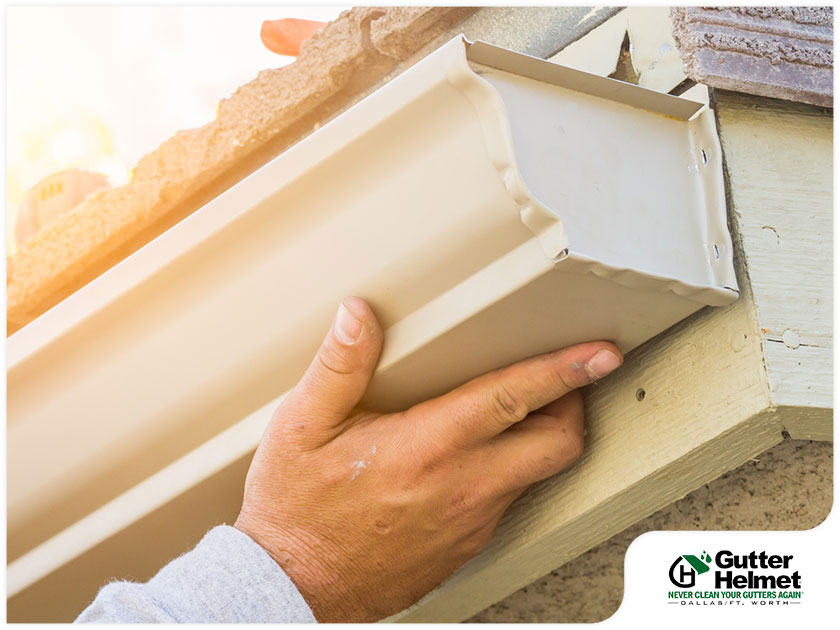If you’ve been doing your research on aluminum gutter replacement options, you may have come across the term “gauge” at least once. In today’s post, local rain gutter guard contractor ABC Seamless Siding discusses why gauge is important when planning a gutter replacement project.
What Is Gauge?
Simply put, a gauge is the measure of the thickness of materials such as sheet metal. The thicker the gauge, the stronger the resulting gutters will be. Choosing the thickest gauge is not as simple as it sounds because of the following factors:
Cost — The thicker the gauge, the more material will be used, therefore the costlier the project will be.
Weight — Gutters hang from roofing fascia. The heavier the gutters, the greater the need for strong fascia boards and proper installation methods. Heavy gutters may also affect installation time.
Manufacturing limitations — Some equipment are not capable of shaping thick-gauge aluminum, which may limit your choice of contractor.
Common Aluminum Gutter Gauge
The following are the three most common aluminum gutter gauges:
.025 — This is the lightest gauge aluminum gutters typically sold in home supply stores. DIYers choose this gauge because it’s affordable and can be installed using off-the-shelf tools. It’s important to note that light-gauge gutters are suitable for use on homes located in mild climates.
.027 — This is the industry standard gauge, the type offered by most gutter contractors. It offers a good balance between cost, labor, and — if properly installed and maintained — long-term performance.
.032 — This is the heavy-duty option, ideal for climates that experience heavy snowfall. If your gutters tend to get damaged by the weight of snow during the winter season, this is worth considering.
Other Considerations
Gauge is not the be-all and end-all of gutter systems. While it is true that thick-gauge gutters offer more resistance to the strain caused by snow and the occasional ice dams, there are other features that can be improved upon that can help avoid premature gutter failure. Choosing the right gutter size (relative to roof slope and local climate, among other factors) can help prevent excessive strain on the gutters. Addressing attic insulation issues can help prevent ice dams. Installing heated gutter guards like Gutter Helmet® with Helmet Heat® can help reduce ice buildup in the gutters.
Do you need a new rain gutter guard or a seamless gutter system? Call ABC Seamless Siding at (800) 824-3772. You can also fill out our contact form to schedule an appointment. We serve customers in Anchorage, Alaska, and the surrounding communities.

